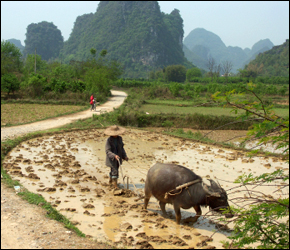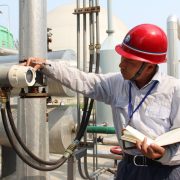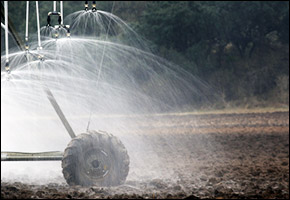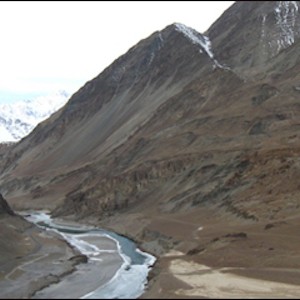Chinese Farms Generate More Water Pollution than Factories
Comprehensive government study shows agriculture to be the country’s biggest water polluter.
China’s government released its most in-depth domestic water pollution study Tuesday, showing discharges in 2007 to be twice as high as previous estimates, the New York Times reports.
 This was the first time the Chinese government included agricultural effluent in the survey. Previously the Ministry of Environmental Protection calculated water pollution from a narrower list of sources that did not include fertilizers or pesticides, according to the NYT.
This was the first time the Chinese government included agricultural effluent in the survey. Previously the Ministry of Environmental Protection calculated water pollution from a narrower list of sources that did not include fertilizers or pesticides, according to the NYT.
The two-year study analyzed 1.1 billion pieces of data from six million sources of pollution to create the most complete picture of China’s pollution problem to date. Sources surveyed included factories, farms, homes and pollution-treatment plants.
“Fertilizers and pesticides have played an important role in enhancing productivity but in certain areas improper use has had a grave impact on the environment,” said Wang Yangliang of the Ministry of Agriculture at a press conference for the study’s release, the Guardian reports.
“The fast development of livestock breeding and aquaculture has produced a lot of food but they are also major sources of pollution in our lives.”
The study showed that chemical oxygen demand-–a key pollution indicator-–more than doubled when farm runoff was taken into account. Agriculture contributes 43 percent of China’s chemical oxygen demand, 67 percent of phosphorus and 57 percent of nitrogen discharges, according to the study.
Sources inside the Chinese government said the report’s release was delayed by the agriculture ministry, which had insisted that farming contributed little pollution, according to the Guardian.
The study has provided a new perspective of water pollution in China. But old figures will still be used to evaluate the government’s success in meeting pollution targets, said Zhang Lijun, vice minister of environmental protection, according to the NYT.
“Current results of the census will not be linked to environmental performance,” he said at the press conference.
The Chinese government has a stated goal of reducing chemical oxygen demand by 10 percent between 2005 and 2010. Data from the study shows a decrease of 3 percent from 2006 to 2007, if agricultural effluent is excluded.
Reducing agricultural pollution will be difficult, says Ma Jun, director of the Beijing-based Institute of Public and Environmental Affairs.
“When it’s millions of farmers, it’s more difficult to bring it under control,” Ma told the NYT.
The government report supports the results of a study released earlier this year by Renmin University in China and Greenpeace, which found that Chinese farmers use 40 percent more fertilizer than necessary.
Source: New York Times, Guardian
Read more about Chinese water issues in Circle of Blue’s special report Hidden Waters, Dragons in the Deep

Brett writes about agriculture, energy, infrastructure, and the politics and economics of water in the United States. He also writes the Federal Water Tap, Circle of Blue’s weekly digest of U.S. government water news. He is the winner of two Society of Environmental Journalists reporting awards, one of the top honors in American environmental journalism: first place for explanatory reporting for a series on septic system pollution in the United States(2016) and third place for beat reporting in a small market (2014). He received the Sierra Club’s Distinguished Service Award in 2018. Brett lives in Seattle, where he hikes the mountains and bakes pies. Contact Brett Walton










Realy I am surprised on the news. Because I didnot expect this much pollution from the agriculture sector eventhough the sector is the highest water user sector interms of water quantity.
The news is very important for others who neglected or give lesser attention for the contribution of water pollution from agriculture
Runoff from farm fields which have been subject to the over application of farm chemicals can “pollute” surface and groundwater. However, the NYT should make it clear the typical agriculturally-derived pollutant is not the same as your typical industrial one, e.g., metals, chlorinated organic compounds, dioxins, etc. Simply not a valid comparison.
Really comes down to how “pollutant” is defined. A definition and ranking system for pollutants based on relative risk (expose duration and dose/concentration) to humans and the environment makes sense to me.
The details are important here and statistics and generalizations can produce unrepresentative and misleading results.